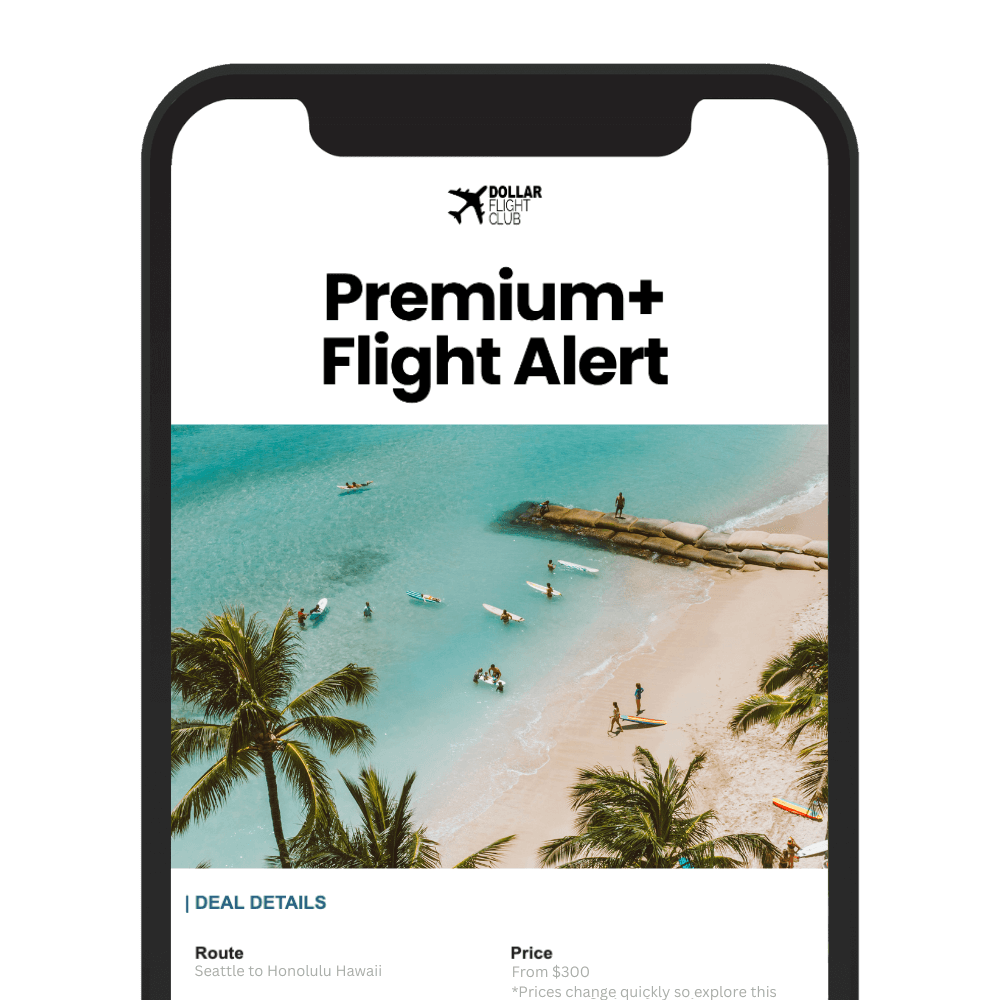Flying business class offers comfort, productivity, and exclusive perks, but it often comes with a high price tag. The good news? You can find deals that make it more affordable by using smart strategies and tools. Here’s how:
- Understand Pricing: Business class fares fluctuate due to demand, competition, and timing. Learn about fare types like promotional, consolidator, and mistake fares for potential savings.
- Use Fare Tools: Platforms like Google Flights and Skyscanner help compare prices. Set up price alerts to catch sudden drops.
- Timing Matters: Book several months in advance, aim for mid-week flights, and consider off-peak seasons for lower fares.
- Leverage Rewards: Use miles, points, or loyalty programs to reduce costs further.
- Evaluate Value: Compare the cost difference between economy and business class, factoring in comfort, productivity, and perks like lounge access and priority services.
How Business Class Fares Work
Business class fares represent a step up in luxury, offering premium features and services. However, their pricing tends to be more intricate than economy tickets.
What Sets Business Class Apart
Flying business class means enjoying perks like lie-flat seats, multi-course meals with curated menus, access to exclusive airport lounges, and personalized service. These extras are designed to make the journey far more comfortable and enjoyable.
Why Business Class Prices Fluctuate
Several factors influence the cost of business class tickets. Demand, competition, seasonal trends, corporate travel cycles, and last-minute inventory adjustments all play a role. For instance, prices on popular routes often spike during busy travel seasons, while routes with multiple airlines may have more competitive pricing. Interestingly, corporate travel patterns and last-minute seat availability can sometimes lead to lower fares.
Types of Business Class Fares
Understanding the different types of business class fares can help you find the best deal:
- Published fares: These are the standard rates that usually come with flexible change and cancellation policies.
- Promotional fares: Temporary discounts offered on specific routes.
- Consolidator fares: Seats purchased in bulk and resold at lower prices, often with restrictions.
- Mistake fares: Rare pricing errors that airlines quickly correct.
- Upgrade fares: Economy passengers can bid to move up to business class.
Familiarizing yourself with these fare types is the first step in spotting great deals on business class tickets. Armed with this knowledge, you’ll be better equipped to navigate the tools and strategies needed to secure premium travel at a more reasonable cost.

Tools for Finding Business Class Deals
Scoring great business class deals takes more than just luck – it’s about having the right tools and staying on top of fare changes.
Using Fare Comparison Tools
Platforms like Google Flights and Skyscanner make comparing business class fares a breeze. Google Flights offers a user-friendly calendar view, allowing you to see prices across an entire month and filter for business class options. Skyscanner, on the other hand, shines with its flexible search features, including monthly fare overviews that can uncover the cheapest travel periods or even unexpected routes.
These tools help you quickly spot price differences between airlines, giving you a clear picture of the market. Once you’ve identified a good deal, setting up alerts ensures you’re ready to act when prices dip.
Setting Price Alerts
Business class fares can swing dramatically, but price alerts keep you in the loop. Services like Dollar Flight Club are especially useful for tracking discounted business class tickets. Their Premium+ plan, for instance, sends email and SMS alerts for major price drops, including mistake fares or limited-time offers. This means you’ll know about deals as soon as they’re available, giving you the best shot at booking them before they’re gone.
Using Membership Perks
Membership programs can sweeten the deal even further. Dollar Flight Club members, for example, gain access to exclusive offers and travel perks that can lower costs even more. Similarly, airline loyalty programs often provide enticing benefits like upgrade certificates or bonus miles, which can elevate your business class experience while keeping expenses in check.

When to Book for the Best Deals
Timing plays a huge role in scoring great deals on business class flights. Knowing when to book can save you a lot and ensure you don’t miss out on the best options.
Being Flexible with Travel Dates
Flexibility is key to finding lower fares for business class. Airlines adjust prices based on demand, so shifting your travel dates by even a day or two can result in noticeably different prices.
Mid-week flights, particularly on Tuesdays and Wednesdays, are often less expensive than peak travel days when business travelers are most active. For example, tweaking your plans to include a Saturday night stay can sometimes reveal discounts that a rigid schedule might miss.
Traveling during shoulder seasons – like late October for Europe instead of the crowded summer months or visiting Asia outside peak times – can also lead to much lower fares. Plus, these periods often offer pleasant travel conditions without the hassle of large crowds.
The Best Times to Book
Timing your booking is just as important as choosing the right travel dates. Business class fares don’t follow the same patterns as economy tickets, so planning ahead is crucial. For most international routes, booking several months in advance strikes the right balance between early discounts and avoiding last-minute price hikes.
Tuesday afternoons are a sweet spot for finding lower fares, as airlines often release discounted inventory before demand picks up.
Special sales like Black Friday and Cyber Monday have become excellent opportunities to snag discounted business class tickets. If you’re a Dollar Flight Club Premium+ member, you’ll even get SMS alerts to jump on these limited-time offers.
Another good time to book is at the start of the year – January and February often feature promotions as airlines aim to boost bookings during slower travel months.
Traveling During Off-Peak Seasons
Avoiding peak travel periods is another way to save on business class fares. Prices tend to skyrocket during the summer, major holidays, and school vacations when demand is at its highest.
On the flip side, late fall and early winter, excluding major holidays, can offer some of the lowest fares of the year. For instance, flying to Europe during this quieter period often means more affordable business class options as airlines work to fill premium seats.
Whether it’s flying to Asia during its less popular weather months, exploring Europe in the colder seasons, or heading to South America during its off-peak times, aligning your travel plans with periods of lower demand can help you land incredible deals on business class tickets.

Advanced Ways to Save on Business Class
If you’ve already mastered flexible booking and fare alerts, there’s another level to explore: advanced reward strategies. These techniques, like using miles and points, can make flying business class much more affordable.
Using Miles and Points
Miles and points programs are a powerful way to save on business class tickets. Once you’ve nailed down timing strategies and price alerts, adding rewards programs into the mix can make premium travel feel within reach. Start by identifying your travel goals – if you’re drawn to a specific region, focus on the airline partners that serve it.
There are three main types of rewards to consider: airline-specific miles, hotel loyalty points, and transferable credit card points. Redeeming points for premium cabin seats often offers better value compared to economy redemptions, with only a small increase in the number of points required.
Comparing Business Class Deals Against Economy Class
When you’re hunting for the best airfare, it’s worth comparing business and economy class to see if upgrading offers genuine value. Business class tickets come with a hefty price tag, but the perks can be equally substantial. To make an informed decision, systematically evaluate the features and costs of each option to determine if the upgrade aligns with your priorities.
Creating a Comparison Table
A side-by-side comparison can help you assess whether the added benefits of business class justify the extra expense. Start with the essentials: total cost, baggage allowances, seat dimensions, and meal service. Then, dive deeper into the features that matter most for your journey.
| Factor | Economy Class | Business Class | Value Difference |
|---|---|---|---|
| Seat Width | 17-18 inches | 20-22 inches | 3-4 inches wider |
| Seat Pitch | 30-32 inches | 60-80 inches | 2x more legroom |
| Checked Bags | $30-60 per bag | 2 bags included | $60-120 savings |
| Lounge Access | $59 day pass | Included | $59+ savings |
| Priority Boarding | $15-25 upgrade | Included | $15-25 savings |
| Meal Quality | Snack/basic meal | Multi-course dining | Varies by airline |
Another important factor is change and cancellation policies. Business class tickets often come with greater flexibility, such as lower change fees or even free changes within a specific window. This flexibility can be a lifesaver if your plans are uncertain, potentially saving you hundreds in rebooking fees.
Arrival perks also play a role, particularly for long-haul flights. Business class passengers frequently enjoy priority immigration lines and expedited baggage handling, which can cut down your wait time by 30-60 minutes at congested airports like JFK or LAX.
This comparison table offers a clear snapshot to help you weigh your options.
Weighing Value vs. Price
Once you’ve compared the features, it’s time to weigh the premium benefits against the extra cost. Consider how much you’re paying for the upgrade and whether it aligns with your travel needs. For instance, a $2,000 business class upgrade on a 14-hour flight to Asia breaks down to about $143 per hour for enhanced comfort. On the other hand, an $800 upgrade for a 6-hour domestic flight costs roughly $133 per hour.
Flight duration is a key factor in determining value. On short flights under 4 hours, the benefits are often limited to priority boarding and minor comfort improvements. For overnight international flights, however, the ability to sleep comfortably and arrive refreshed can make a significant difference.
Think about productivity, too. If flying business class allows you to work more effectively, the upgrade might pay for itself. For example, a consultant who bills $200 per hour and gains 4 extra hours of productive work in business class effectively offsets $800 of the upgrade cost.
Recovery time is another hidden consideration. If flying business class helps you avoid jet lag and eliminates the need for an extra recovery day, you can save on hotel costs while gaining an additional productive day at your destination.
For special occasions like honeymoons or milestone trips, the experience alone might justify the splurge. But for routine business travel, it’s smart to focus on the numbers. Deals where the upgrade cost is less than 2-3 times the economy fare often hit the sweet spot.
The best value in business class typically comes when you find deals where the upgrade costs 50-100% more than economy, rather than the usual 300-500% premium. At these price points, the added comfort, flexibility, and services often make the extra expense worthwhile, especially for flights longer than 6 hours.

Conclusion: Make Your Business Class Dreams a Reality
Scoring amazing business class deals takes a mix of good timing and smart planning. The tips shared here give you a solid game plan to enjoy premium travel without breaking the bank.
Start by planning ahead and keeping your travel dates flexible – this boosts your chances of snagging a great offer. While the ideal booking window can vary depending on the route or demand, early preparation generally gives you an edge.
Take advantage of tools like fare alerts to track sudden price drops and comparison sites to identify true bargains. For instance, Dollar Flight Club uses these strategies to deliver handpicked business class deals straight to your inbox or phone via its Premium+ plan.
Don’t forget to assess the value of each deal. When business class tickets are priced only slightly higher than economy, it’s often worth the splurge. These deals require a watchful eye and the right alerts to grab them before they’re gone.
For even deeper savings, consider advanced tactics like using reward miles, hunting for mistake fares, or booking mixed cabin options. The trick is to stay informed and act fast, as these golden opportunities tend to disappear quickly.
Flying business class doesn’t have to be just a dream. With the strategies outlined here and the constant deal tracking from Dollar Flight Club, you’re ready to turn those premium travel goals into reality. Keep your alerts active, stay flexible, and book the moment you see a deal that fits.
FAQs
What’s the best way to use miles and points to save on business class tickets?
To cut costs on business class tickets using miles and points, start by focusing on making the most of reward availability and transferring your credit card points to airline loyalty programs. Planning your trip early and keeping your travel dates flexible can greatly increase your chances of snagging those sought-after award seats.
Another smart strategy is to use your miles to upgrade from economy to business class. This often delivers better value compared to redeeming miles for a full business class ticket. Many loyalty programs also allow you to book one-way tickets with points, giving you the freedom to mix and match options for the best deals. Keep an eye out for discounted fares and special promotions to stretch your miles and points even further for big savings.
How can I find mistake fares and special business class deals?
Finding mistake fares and discounted business class deals takes a mix of good timing, the right tools, and a bit of persistence. Mistake fares – pricing errors made by airlines – can save you hundreds or even thousands of dollars if you act fast enough. To catch these rare deals, signing up for fare alert services can be a game-changer. These services notify you the moment such opportunities pop up.
One standout option is Dollar Flight Club, which simplifies the hunt by sending email and SMS alerts for flights with discounts of up to 90% on domestic and international routes. On top of that, members gain access to exclusive travel perks and discounts, making it easier to enjoy premium travel experiences without the hefty price tag.
Is upgrading to business class worth it for different flight lengths?
The decision to upgrade to business class often hinges on the length of your flight. For journeys lasting more than six hours, especially overnight or international flights, the perks – like extra legroom, enhanced comfort, and premium service – can make the higher price (typically three to five times the cost of economy) feel like a worthy investment. Being able to rest well during a long flight can significantly improve your overall travel experience.
On the other hand, for shorter flights, the advantages of business class might not seem as compelling. With limited time in the air, you may find fewer chances to fully enjoy the upgraded amenities, making the cost harder to justify. In the end, it all boils down to your budget, priorities, and just how much you value comfort when traveling.










